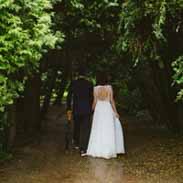MUL 2010 Cognitive Assessment M3 – Flashcards
Unlock all answers in this set
Unlock answersquestion
Oratorio differs from opera in that it has no
answer
acting, scenery, or costumes.
question
George Frideric Händel's Messiah is an example of
answer
an oratorio.
question
The Baroque, as a stylistic period in western art music, encompassed the years
answer
1600-1750.
question
The longest period of Bach's professional life was spent as director of music at St. Thomas's Church in
answer
Leipzig
question
The large group of players in a concerto grosso is known as the
answer
tutti.
question
Monteverdi spent the last part of his career as music director at
answer
St. Mark's in Venice.
question
Composers in the middle Baroque phase favored writing compositions for instruments of the __________ family.
answer
violin
question
The orchestra evolved during the baroque period into a performing group based on instruments of the ____________ family.
answer
violin
question
The __________ is usually the focus of Händel oratorios.
answer
chorus
question
Vivaldi wrote approximately _________ concerti grossi and solo concertos.
answer
450
question
A prominent Baroque composer of trio sonatas was
answer
(not) all of these
question
The German-born composer who had a successful career in England as a composer of Italian opera and English oratorio was
answer
George Frideric Händel.
question
The first public opera house in Europe to offer entry to anyone with the price of admission opened in
answer
1637 in Venice.
question
The two giants of baroque music composition were
answer
Georg Friderick Händel and Johann Sebastian Bach.
question
The main keyboard instruments of the Baroque period were the organ and the
answer
harpsichord.
question
A characteristic often found in baroque melodies is
answer
a short opening phrase followed by a longer phrase with an unbroken flow of rapid notes.
question
The solo instruments in Bach's Brandenburg Concerto No. 5 are the __________, violin, and harpsichord.
answer
flute
question
Some of Vivaldi's instrumental concertos were later arranged by
answer
Johann Sebastian Bach.
question
The characteristic found in almost all Baroque music is
answer
(not) monophonic texture.
question
Antonio Vivaldi was famous and influential as a virtuoso
answer
violinist
question
A collection of twenty-four preludes and fugues, one in each major and minor key, basic to the repertoire of keyboard players today, is Bach's
answer
Well-Tempered Clavier.
question
Which of the following statements is NOT true?
answer
Henry Purcell was virtually unknown in his own time, but today is considered the greatest of English composers.
question
Händel spent the major portion of his career in
answer
england
question
Which of the following is NOT a part of the baroque suite?
answer
waltz
question
A polyphonic composition based on one main theme, a cornerstone of Baroque music, is the
answer
fugue
question
A common variation form in the baroque is based on the use of a ground bass, or
answer
basso ostinato.
question
__________ refers to a vocal line that imitates the rhythms and pitch fluctuations of speech.
answer
Recitative
question
A large-scale composition for chorus, vocal soloists, and orchestra, un-staged and usually set to a narrative biblical text, is called a(n)
answer
oratorio
question
A(n) _______ is a musical number in an opera for two solo voices with orchestral accompaniment.
answer
duet
question
___________is a musical idea repeated over and over in the bass while melodies above it constantly change.
answer
Basso ostinato
question
Speech-like melody in an opera accompanied only by a basso continuo is called
answer
secco recitative.
question
The title for the music director of a church was
answer
kantor
question
A sung piece, or choral work with or without vocal soloists, usually with orchestral accompaniment, often used in the Lutheran service is the
answer
canatata
question
Castrati
answer
all of these
question
A multi-movement set of dance-inspired instrumental movements is called a
answer
suite
question
The principle of "cuius regio, eius religio" meant that
answer
the population of a state was required to adopt the religion of its ruler or prince.
question
The ruler who epitomized absolute monarchy in the seventeenth century was
answer
Louis XIV
question
Frederick the Great, King of Prussia, was also a
answer
(not) composer
question
Bacon, Descartes, Spinoza, and Newton were all Baroque era
answer
scientists
question
Which two states remained politically fragmented and frequently invaded by other countries in the sixteenth and seventeenth centuries?
answer
Germany and Italy
question
The prevailing method of government in the seventeenth and eighteenth centuries was
answer
absolute monarchy
question
The social class whose power and wealth increased the most during the Baroque era was the
answer
(not) clergy
question
All of the following were outcomes of the Thirty Years War except:
answer
(not) The monarchies in Europe became stronger.
question
All of the following were Baroque painters except
answer
(not) Bernini
question
As a result of religious conflict during the Baroque period
answer
Europe was eventually divided into a Protestant north and Catholic south.
question
Dido and Aeneas, which many consider to be the finest opera ever written to an English text, was composed by
answer
Henry Purcell.
question
Baroque painters used their materials to expand the potential of ____________ to create totally structured worlds.
answer
all of these
question
Bach's Brandenburg Concerto No. 5 is unique in that
answer
it gives a solo role to the harpsichord.
question
The _____________ is an instrumental genre that uses the ritornello form in the first movement and usually juxtaposes a soloist or small group with an orchestra.
answer
(not) oratorio
question
The early Baroque period in music was characterized by
answer
more use of homophonic texture.



